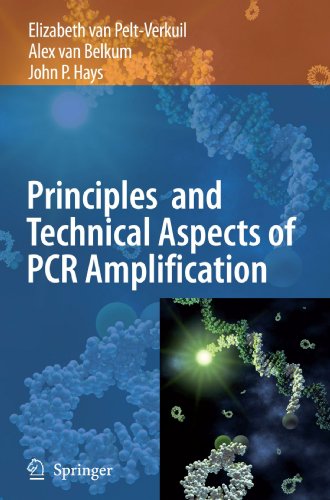

Most ebook files are in PDF format, so you can easily read them using various software such as Foxit Reader or directly on the Google Chrome browser.
Some ebook files are released by publishers in other formats such as .awz, .mobi, .epub, .fb2, etc. You may need to install specific software to read these formats on mobile/PC, such as Calibre.
Please read the tutorial at this link: https://ebookbell.com/faq
We offer FREE conversion to the popular formats you request; however, this may take some time. Therefore, right after payment, please email us, and we will try to provide the service as quickly as possible.
For some exceptional file formats or broken links (if any), please refrain from opening any disputes. Instead, email us first, and we will try to assist within a maximum of 6 hours.
EbookBell Team

5.0
88 reviews
ISBN 13: 9781402062414
Author: Elizabeth van Pelt Verkuil, Alex van Belkum, John P Hays
Kary Mullis was awarded a Nobel Prize for inventing the PCR technique more than 15 years ago in 1993. Since its "discovery", multiple adaptations and variations of the standard PCR technique have been described, with many of these adaptations and variations currently being used in clinical, diagnostic and academic laboratories across the world. Further, these techniques are being applied at the diagnostic level (e.g. as high throughput testing methodologies to detect minimum residual disease, the presence/absence of specific pathogens etc), as well as to increase our understanding of fundamental disease processes.
Frequently, PCR technicians and specialists limit their understanding of PCR to one particular methodology. However, this approach limits their appreciation of the range of versatile PCR techniques currently available, techniques that may be applicable and indeed more suitable to their own laboratory situation.
This manual aims to provide thereader with a guide to the standard PCR technique and its many available modifications, with particular emphasis on the role of PCR techniques in the diagnostic laboratory (the central theme of this manual). Further, many important technical issues have been addressed, including types of PCR template material, PCR optimization, the analysis of PCR products, quality control and quality assurance, variants and adaptations of the standard PCR protocol, quantitative PCR and in situ PCR. The reader of this manual will be excellently informed about the fundamental principles of PCR and the true potential of PCR within clinical laboratory practice.
Chapter 1: The Polymerase Chain Reaction
Chapter 2: A Brief Comparison Between In Vivo DNA Replication And In Vitro PCR Amplification
Chapter 3: The PCR In Practice
Chapter 4: The Different Types And Varieties Of Nucleic Acid Target Molecules
Chapter 5: PCR Primers
Chapter 6: Deoxynucleotide Triphosphates And Buffer Components
Chapter 7: Taq And Other Thermostable DNA Polymerases
Chapter 8: Important Considerations For Typical, Quantitative And Real-Time PCR Protocols
Chapter 9: Analysis Of PCR Amplification Products
Chapter 10: Ensuring PCR Quality - Laboratory Organisation, PCR Optimisation And Controls
Chapter 11: Ensuring PCR Quality - Quality Criteria And Quality Assurance
Chapter 12: Variants And Adaptations Of The Standard PCR Protocol
Chapter 13: In Situ PCR Amplification (ISA) - Major Considerations, Sample Processing And Applications
principles and technical aspects of pcr amplification
principles and technical aspects of pcr amplification pdf
purpose of pcr amplification
what is pcr amplification
pcr amplification process
Tags: Elizabeth van Pelt Verkuil, Alex van Belkum, John P Hays, Principles, Amplification